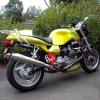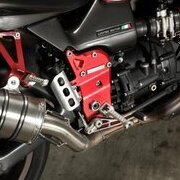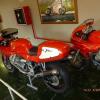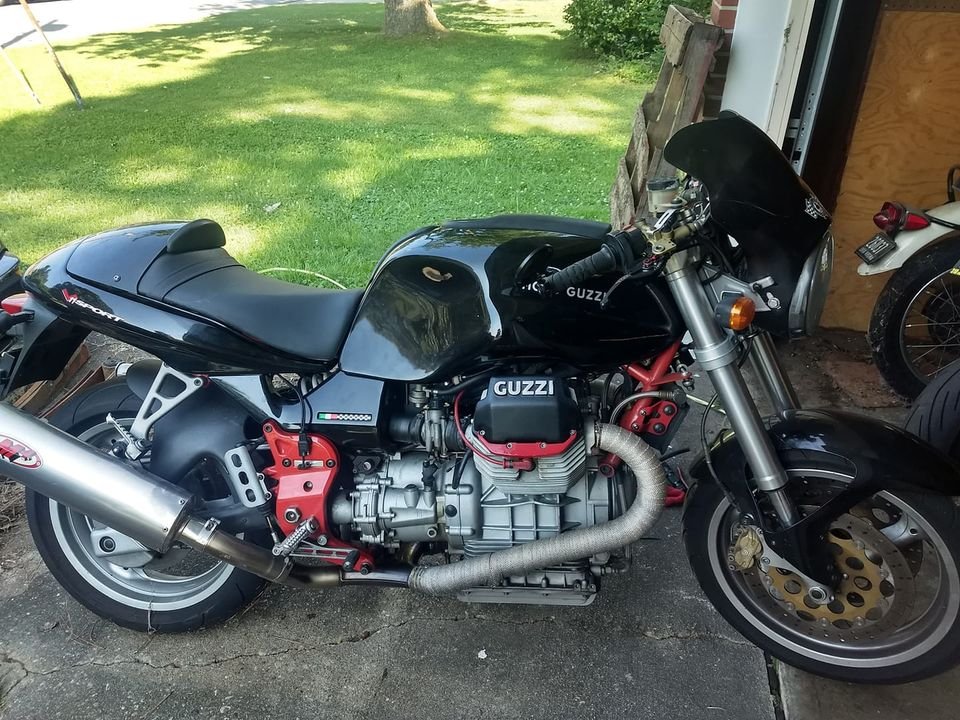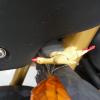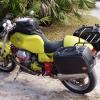Leaderboard
Popular Content
Showing content with the highest reputation on 09/24/2020 in all areas
-
Having the same Mosfet regulator experience with my 2 V11. Only around 10000m so far, but 14.73 v idling, and the 30amp fuse has nothing much to do. Slipped in a 15amp fuse , just to observe, still there Cheers tom3 points
-
Damm I meant to say on the video if anybody is contemplating this as a mod, what I didn't realize at the time was that there was 3 mm spacer jammed into the top of the valve as a shim. Like the dope I am I completely missed it and only found out about it later when messing with the valve again So the valve had the 1mm crush washer installed on the outside at the top of the valve which reduces the spring tension and a 3mm shim on the inside of the top bolt which increases the spring tension. If installing without the crush washer (which IMHO isn't necessary) I'd start with a 2mm washer/spacer. As Phil pointed out, and I found out, the only sure fire way to reliably determine the lift pressure is to use an oil tester. I've been using air and found that the valve lifted approximately 10psi earlier than when actually tested on the cranking/running engine. Picture of the valve to make things a little clearer3 points
-
The heads are different on the EV Calis. Smaller valves and a different oil feed line from memory. I have one in the workshop. The cali cams are different and there is a slight variation in the rocker arms from earlier to later engines. I fitted later rocker arms on my engine which if I recall had a slightly larger end and more thread for the adjusters. Cranks are different depending on what alternator you run and the cranks have a different balance factor depending on what engine and rod piston combo. The rods do vary between the models but I'm not sure of the exact details. Ciao3 points
-
https://www.facebook.com/marketplace/item/7022785606271252 points
-
Well I dont agree with running an oil pressure gauge. John and I have done plenty of research on this now and in my view we have a workable outcome. With the Griso spring you get around 75psi hot oil pressure maximum and idle pressure of around what,32psi hot on 15W-50 oil. The hot maximum is plenty now and the hot idle pressure also has plenty of head room as well ( considering 10 psi at idle is actually all you need). We now have a greatly uprated pump, driven by steel gears which should allay any reliability issues. So John has done a brilliant job with this with a great outcome with plenty of pressure head room at both ends and what should be a bullet proof oiling system. Great, I see no need for an oil pressure gauge now the LOP light is all that's needed. A LOP gauge is just another failure point and distraction in my view. My bike runs significantly less pressure than Johns engine currently and I'm totally comfortable running with just a light. Pretty much every motorcycle made and the vast majority of cars use a light only. There comes a point where you can get tied up with to much information. Oil temperature is a more important matter to look at I think esp in hot ambient traffic conditions. Ciao2 points
-
The newer cylinders are different, has 0.3 mm less hight for more compression ratio (9.2 old / 9.5 new).2 points
-
1 point
-
Excellent work John, but just 1 amendment for clarity so people using this as a resource in the future dont get confused. You have the plunger the wrong way around. The protruding nose on the plunger engages with the spring and the cylindrical body of the plunger slides into the outer body. Ciao1 point
-
1 point
-
Get a Shindengen Mosfet from here and you'll never have to worry about a regulator again. Have them on the Ducati's. http://www.roadstercycle.com/1 point
-
One more thing I put rather clumsily was in the tale of the 28psi idle pressure and the statement "50psi and even that's is really too low" when referring to cold idle presssure. 10psi at idle is more than enough, what I was trying to get across was on cold oil idle the relief valve is partially lifting/leaking and the setpoint that should be on the valve is 70psi, however they all lift early and idle at 50psi. Revving the engine will raise the pressure, choking the valve. I reckon It rises to a bit over 60psi at 3k rpm but I don't know if the pressure rises any higher than that. From what I've seen from the short Griso spring test I suspect not. As I also have a Sporti I swapped the internals of the sport pipework into the HiCam to test, when I could not understand why I was getting low pressure at idle. The results I saw when cranking were identical, I actually started to question my sanity and repeated the whole thing twice as I could not believe the results were identical. Both valves showed the same system pressure of 50psi. The Sport engine's relief valve pressure is around 1 bar lower, Guzzi quote 56-60psi for the 2 valve engines and 70psi (no tolerance) for the 4 valve. Then I checked the parts book, well, well, well identical components including the spring in both valves....................Go figure. I believe the intention was to shim the spring to obtain a higher relief pressure for the HiCams. They either weren't shimmed in the factory or the spring rate so soft as to make no difference to the observed oil pressure. The lower pressure seen when the valve lifts on the HiCam is due to the large oil flow to the heads, dropping the pressure dramatically. When that same relief valve is used in the 2 V/V bike it will idle circa 65psi cold oil. I can only surmise that due to the rushed design and pressure (bad pun) to get a bike out the door with more horses, very little thought went into the design which, as a result meant the system just didn't work the way Guzzi envisaged.1 point
-
Yes of course it was, thanks Weegie. I was watching your new vid last night. Good stuff. The range of variation your gauge shows should give anyone pause - a lower flow rate plus no idea what's going on in a motor known for expensive fragility, no thanks, Caruso + gauge it is. Coming into 4Vs at this stage it'd be daft not to act on the info that's available. So ta! PS when I got my Sport i it was a dealer demo with a discount as they were going out of business. They had an RS too and I nearly jumped for that instead. If I had I'd have had bigger bills for sure; I'd have taken things for granted for that bit too long.1 point
-
Here is what happens when the engine was run with the Griso spring in1 point
-
Here's a link to the photos I took during the weekend. Didn't pull out the camera, just the phone, but had a good time with docc and the guys. https://ibb.co/album/NtZSgC1 point
-
You'd be guessing wrong. California roads are as good as you get in the states. I've been everywhere, man.. wrote a song about it. SoCal *is* crowded.. on the weekends. During the week, I pretty much have the canyons to myself. Don't get me wrong.. I love NW Arkansas, too, along with Colorado, the Virginias, Carolinas and N. Georgia. Too many frost heaves in the green and white mountains of the Northeast takes them off the list. My favorite road of all time used to be Beartooth pass from Red Lodge to Yellowstone, although fairly rough. The scenery is freakin awesome, though. Then, I rode 180 east of Visalia, Ca. Up to the top of the mountain range and back down, glass smooth pavement, maybe 50 yards is the longest straight. Talk about technical.. California roads are hard to beat.1 point
-
I'd say best. Once you factor in traffic as well as the scenery, condition of the roads, site views, technical riding and quaint places. Colorado is close but there are fewer roads over the mountains and more congestion. The Smokys have too much traffic. Haven't done N Ga. There are places in N Cali and Sierras that might be good but I would guess more like Colorado. So Cal seems pretty crowded. So I am open to "probably better roads". There should be a thread about it I suppose.1 point
-
They are 'nice' riding roads, but best? Naa. Of course, you may prefer different fish and chips than I do..1 point

